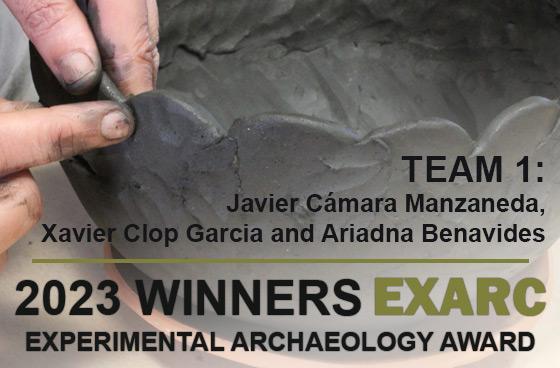
The EXARC Experimental Archaeology Award 2023 opened on May 1st. In the three months we received 22 applications. Thanks to our sponsor, EXARC member John Kiernan, the jury selected two winners of 500 EUR each. Both are teams of three colleagues working together, one from Spain other from US.
Team 1: Javier Cámara Manzaneda1, Xavier Clop Garcia1, Ariadna Benavides2
TITLE: REACT. RE-building Ancient Ceramic Technologies: The Patchwork Technology from the Early Neolithic Mediterranean contexts
Pottery-manufacturing sequences and, particularly, their forming processes, represent a potential proxy for reconstructing the ways of doing and the technical behaviour of pottery producers in the past. In Prehistoric archaeology, the implementation of this research line has yielded the recognition of a wide diversity of technical traditions in Europe for the onset of the Neolithisation process and during the development of the Bronze Age. Many of these forming techniques present clear parallels with those reported from the ethnoarchaeology or from pilot experimental programs. However, very recent research on this field has reported evidence of techniques with no current parallels in the literature.
In the frame of the EXARC Award, the REACT project proposes a new contribution focusing on reconstruction of experimental vessels built with the SPT technology and their subsequent breakage (controlled and impact breakage programmes), followed by their multiscale characterization: the systematization of technological traces (macro-mesoscopic analyses), imaging methods (3D scanning and X-ray radiography) and the alignment of the ceramic components (tangential & radial thin-sections).
The goal of this experimental and analytical program is to build a new dataset based on robust experimental evidence that connect the ordered sequence of gestures and procedures of the SPT technology with the resulting manufacturing traces. The novelty of this project is the integration of 5 controlled experiments following the same variables and their breakage combining direct impacts (frequent system for the archaeological pots) and controlled progressive weight transfers. The expected outcome is a new systematised and transversal collection of technological features that bring a new referential for being compared with the current research focused on this Neolithic technology as well as to contrast the reported evidence from the archaeological record.
1 ARCHAEOM, Dept. Prehistory, Universitat Autònoma de Barcelona.
2 Enfang, ceramic workshop; edRa Arts & Design School (Rubí, Barcelona).
We would like to thank the other applicants for their time to send in their proposals, it was a pleasure to read them, and we hope to hear more about your projects in the future!
